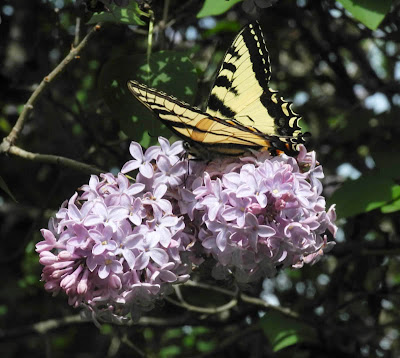Ishida Yutei, Flock of Cranes detail
At this time of year, when birds return north for the warm months, it seems a perfect occasion for visiting the exhibition
Birds in the Art of Japan at the Metropolitan Museum of Art. You can see all the work in the exhibition at the link; they include screens and hanging scrolls, prints and three dimensional objects, all with birds as their central motifs.
Ishida Yutei, Flock of Cranes, Edo period, 1767-84; pair of six-panel folding screens; ink, color, and gold on gilt paper.
This screen is a tour de force, with its complex intermingling of the forms of cranes, each one an individual, each graceful and full of life, with the staccato endings of their skinny legs.
Attibuted to Kaiho Yusho, Lin Hejing and His Crane (detail), early 17th century; two-panel screen remounted as a hanging scroll, ink and light color on paper.
Lin Hejing, a famous northern Sung poet, is shown in a tender gesture towards his pet crane.
Nagasawa Rosetsu, Cranes (one panel of two), 1780s; ink and color on paper.
A third image with a crane shows us the humorous aspect of the bird, as it faces us straight on, with a quizzical expression.
Attributed to Kano Sanraku, Autumn Millet and Small Birds, Edo period (1615-1868); pair of eight panel folding screens; ink, color, and gold on gilt paper.
A very busy scene is pictured on this screen, as birds hover about the ripe grain, a visual feast for us. There is a wonderful sensitivity here in the various attitudes of the birds as they fly about.
Shibata Zeshin, Three Crows in Flight and Two Egrets at Rest, late 19th century; two panel folding screen; colored laquer and white pigment on gilt paper.
On a withered branch
a crow has come to rest––
autumn evening.
––Matsuo Bashō
A very different image from the previous screen, this is much simpler in form and pared down in composition. There were several paintings of crows in the exhibition, and I learned from a wall label that they've been a part of Japanese art since ancient times. They have a dual nature for the Japanese: "in Confucian teachings, a crow is a symbol of filial piety, since younger birds are said to take care of their elders when sick or disabled. Despite these positive associations, crows are nevertheless considered pests by farmers and city dwellers alike, for raiding crops or for their raucous cawing at the crack of dawn." I can relate to that!
Mochizuki Gyokkei, White Peafowl, 1908; pair of six-panel folding screens; ink, color, gold, and gold-leaft dust on silk.
Peacocks are the most remarkably beautiful of birds, but I've never seen a white one. This painting shows us a regal bird in all its glory.
Kawanabe Kyosai, Eagle Attacking a Monkey, 1885; hanging scroll; ink and color on paper.
Not all is simple beauty: a powerful eagle, its eye and talons emphasized with white, its feathers bold and dramatic, attacks a small monkey. From the wall label I learned that in this work the artist "distilled the soul of the Japanese nation".
Mori Sosen, Silkies, before 1808; hanging scroll; ink and color on silk
Not all was grand drama in these paintings; even the domestic chicken had a place. These are special chickens, to be sure;
silkies have fluffy feathers, almost fur-like, which the artist has captured beautifully. In all the paintings in the show, there's a sense of careful observation of each bird––its form and character and details––as the artist transforms a three dimensional creature into a beautifully rendered image.
Kosode Robe with Roosters and Hens, 19th century; silk, metallic thread, embroidered figured crepe.
Chickens even show up, delicately embroidered, on a rich red robe.
Inro with Peacock, 18th-19th century; lacquer work with gold and silver in low and high relief, and mother-of-pearl inlay.
An
Inro is a small container that was hung from the belt of a kimono. This beautiful, jewel-like object has a peacock sitting elegantly across its curved form. Whether a regal bird such as a peacock or eagle, or an ordinary crow, Japanese artists depicted them with reverence, with beauty, and with the respect of close attention.











































.jpg)













